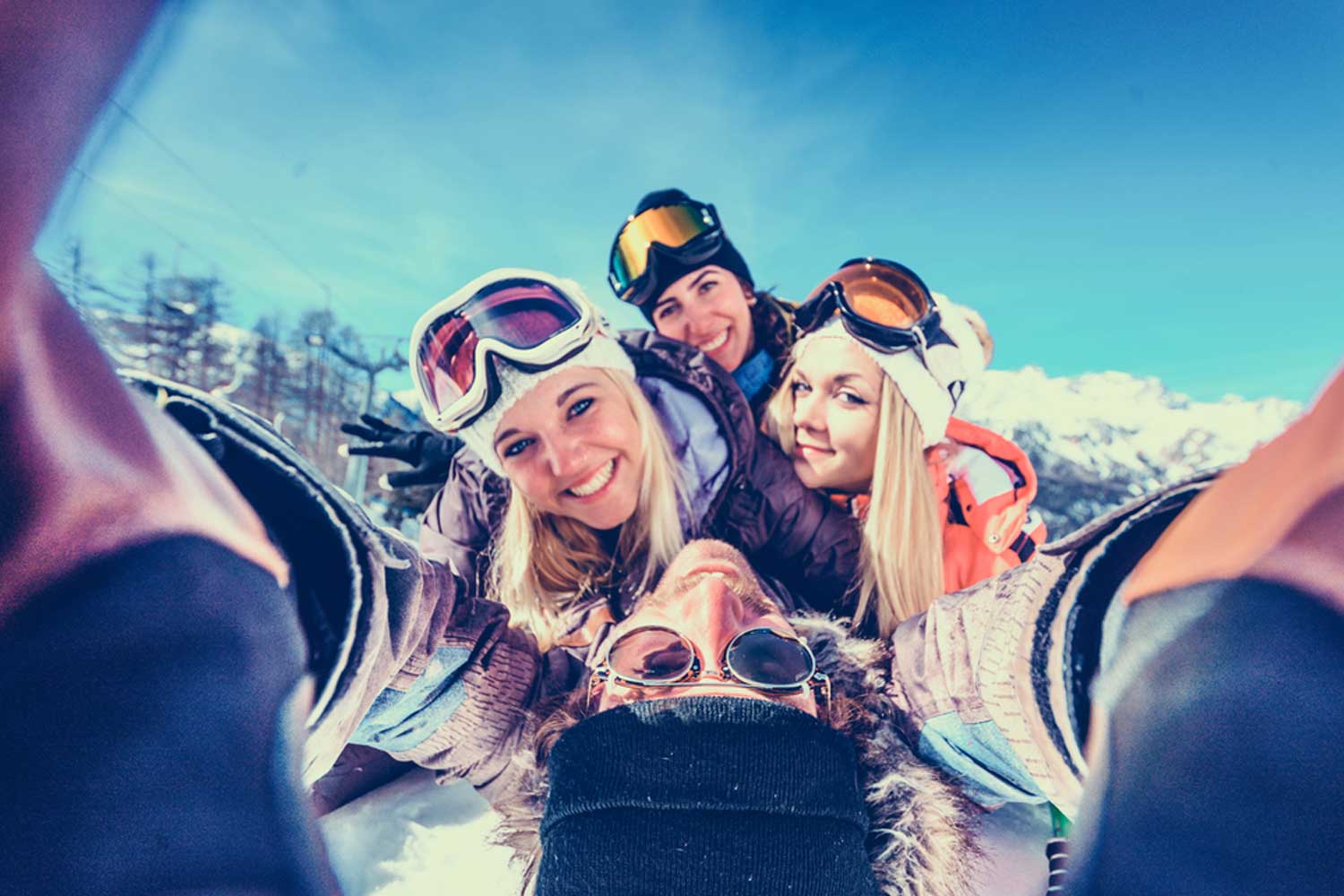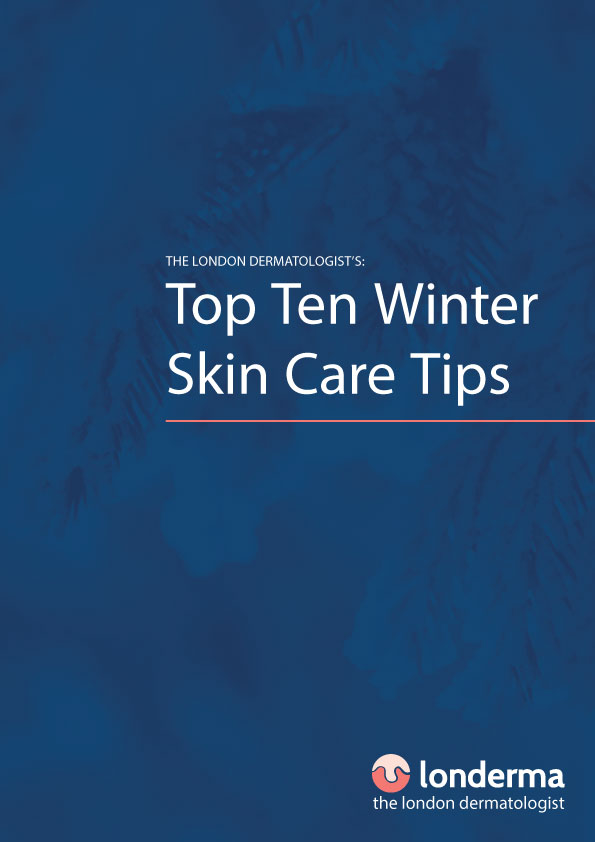Video consultations now available

Are you lucky enough to be hitting the slopes this winter? Well remember your snow booties, enjoy the vin chaud and hopefully you’ll get plenty of fresh powder. With minus 15 wind chill and masses of reflected UV light from the snow it’s amazing that our skin copes at all. Here’s a few quick tips from The London Dermatologist to keep your skin healthy as you schuss, slalom and scoff your delicious lunch on the mountain terrace.
Although it’s mid-winter, ultraviolet levels on the slopes can be massive. There are two reasons for this. Firstly, the level of UV increases by about 5% for every 1000 feet of altitude. It doesn’t sound much, but it means that on a 10,000 feet high mountain you get 50% more ultraviolet light than at sea level. The second is the snow itself, which acts as brilliant UV reflector, increasing the levels by about 85%. The diffuse reflection comes in all directions, making the underside of your chin, nose and ears more vulnerable. UV light causes sunburn, tanning (a sign of damage), premature skin aging, pigmented sun spots, surface skin blood vessels, skin cancer and eye damage including cataracts.
Protecting yourself is easy. Choose a high factor (at least 30) and broad-spectrum sun block. Don’t rub it in too thinly. My favourites are Altruist, Anthelios and Sun Sense. Apply it before you go out in the morning, and don’t forget to apply to the underside of the nose and chin, your lips and near the eyes. Take a small bottle and reapply at lunch. Choose a polarized mask or wrap-around shades with UV filters, which will both reduce reflected glare and protect against UV.
If you are prone to coldsores, sun exposure can trigger an attack, which is not much fun on a holiday. This is because UV light reduces the numbers of immune cells in the skin, which allows the dormant virus to come out and cause trouble. The first sign is usually tingling, followed within 24 hours with painful red spots which become blisters and then form the characteristic crust for a few days. They don’t always occur on lips and commonly appear on cheeks. The key once again is sun protection, but if you are prone, take a tube of aciclovir cream (available from pharmacists without prescription). Start applying it at the first sign of tingling and use five times a day for five days.
Cold air at altitude holds much less moisture than air back home. Our lips are delicate mucosal structures with a much thinner outer layer than the rest of our skin, and in cold air they will just dry out and become sore. Combine this with a bit of sunburn and cold air blow drying when sitting on chair lifts and you have the perfect recipe for nasty lip cracking. Keep a lip balm in your pocket and apply every 1-2 hours. Look for balms containing petrolatum, beeswax or shea butter. Perhaps avoid anything that causes tingling or stinging of the lips after applied, such as menthol, peppermint or other flavours or fragrances. Aim for ones with added UV protection, but my tip is to apply your normal sunblock to your lips at least twice a day to give better protection, then apply your lip balm on top.
The fingers and toes are described by doctors as ‘extremities’- right at the end of the body, where the circulation is most sluggish and vulnerable. In cold weather, blood supply there can shut down, the eventual and extreme result being frostbite. Skiers are more likely to experience numbness and if unlucky develop chilblains (also known as perniosis). Chilblains cause painful inflamed reddish or purple lumps that can develop on skin rewarming and can hang around for days. The best way to avoid these if you are prone is to avoid excessive cold: Buy a pair of good-quality mittens (rather than gloves), and consider toe and finger warmers. Much commoner are blisters, caused by friction from boots or clothing. Make sure boots fit well, perhaps by having them professionally fitted. Avoid folds in socks and don’t tuck trousers into your boots. If you develop a blister, try to avoid bursting it until it is 2-3 days old and take a blister relieving pack with you on holiday.
Bon Ski!
 eBook Download: Top Ten Winter Skin Care Tips
eBook Download: Top Ten Winter Skin Care Tips